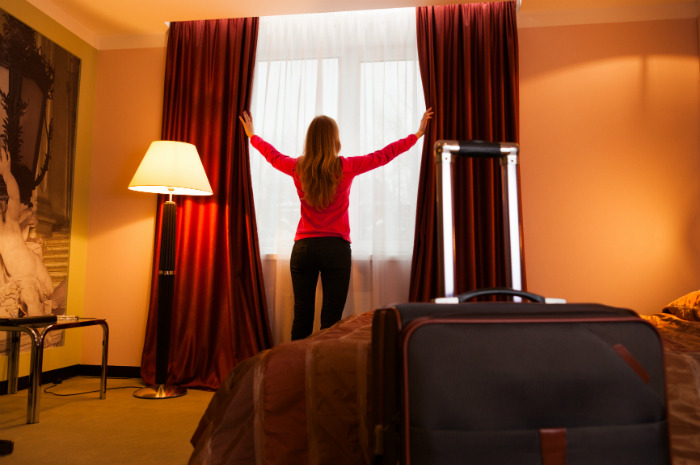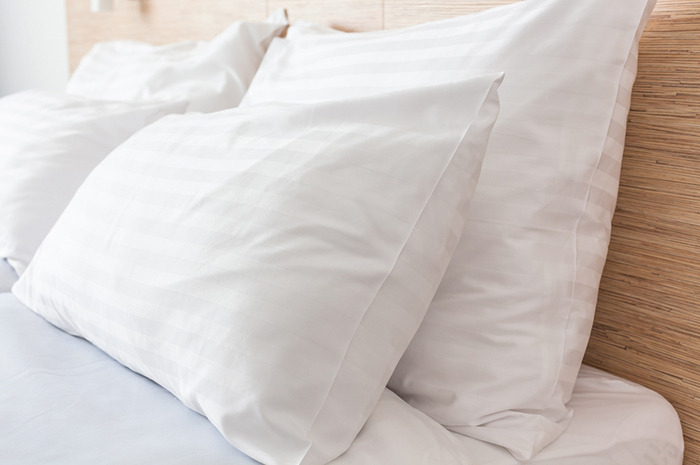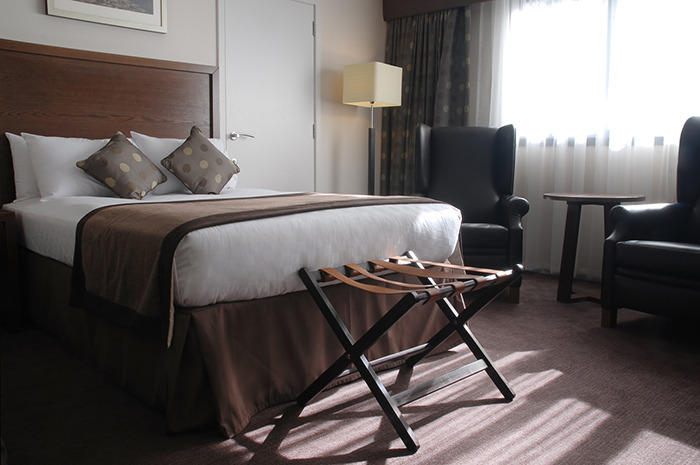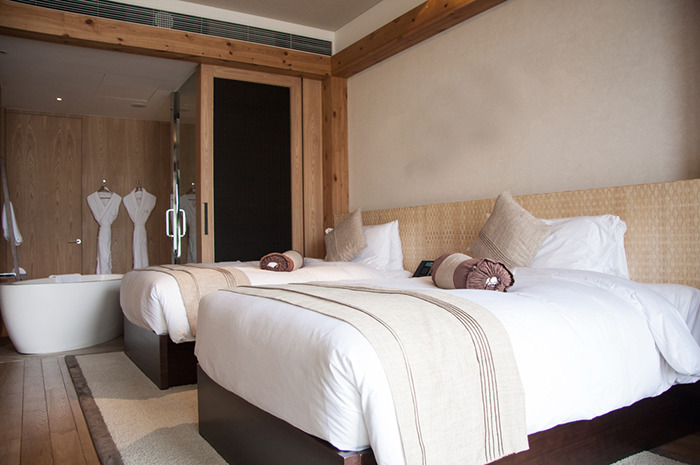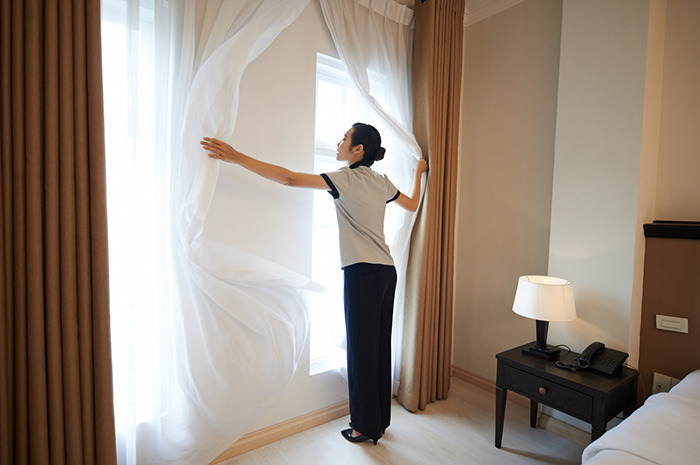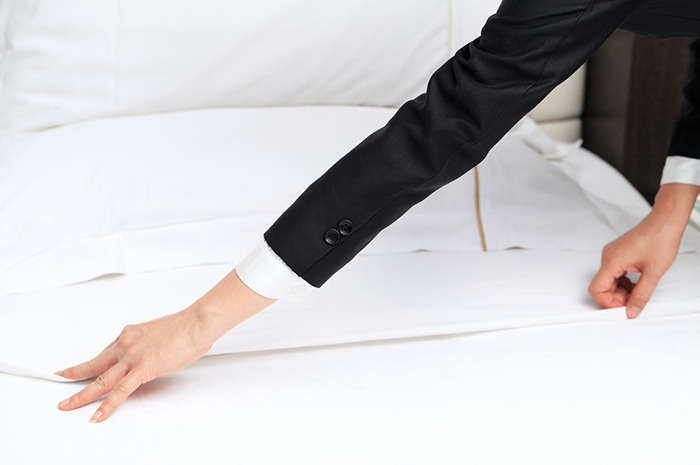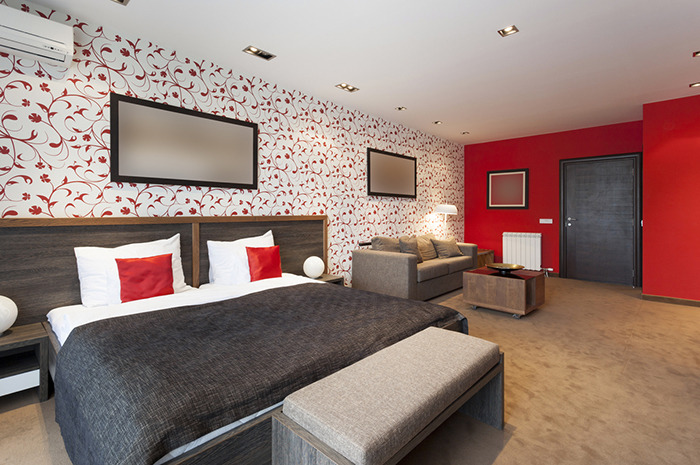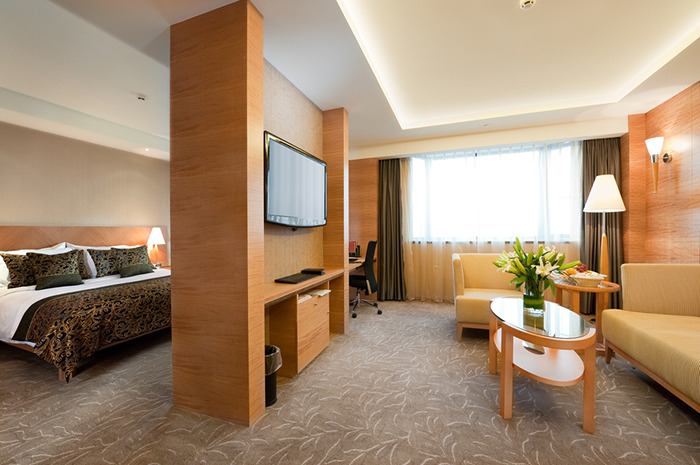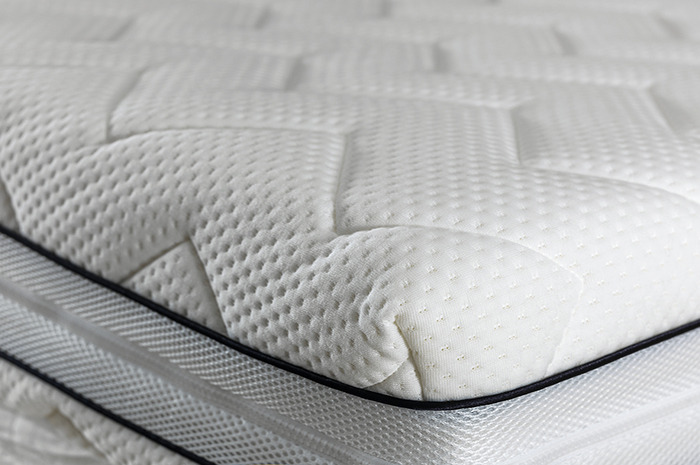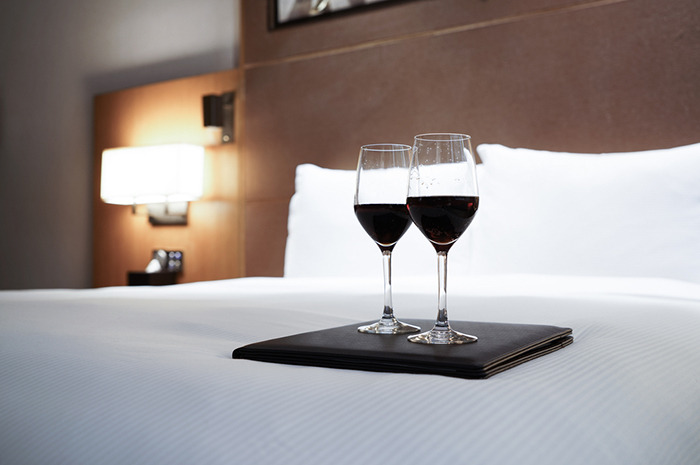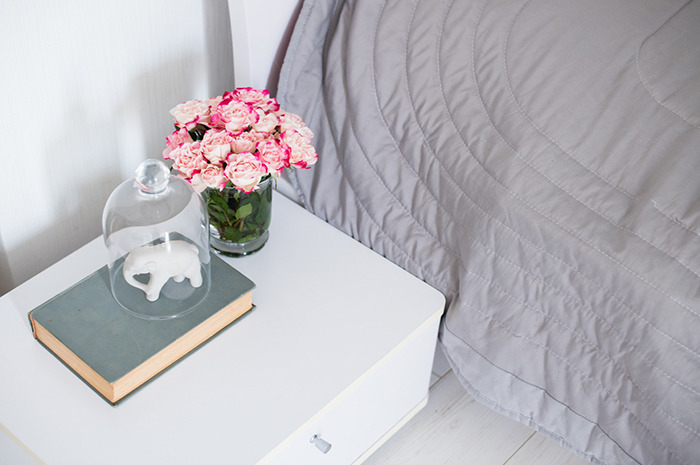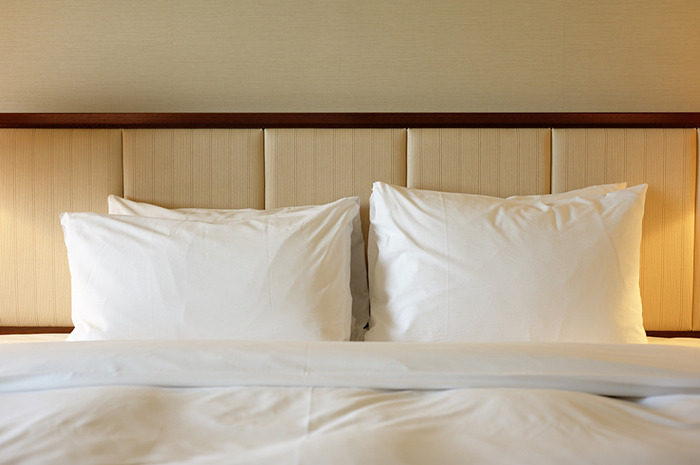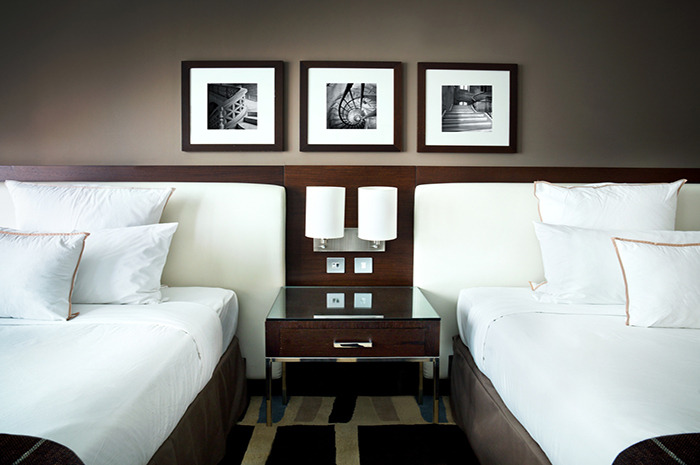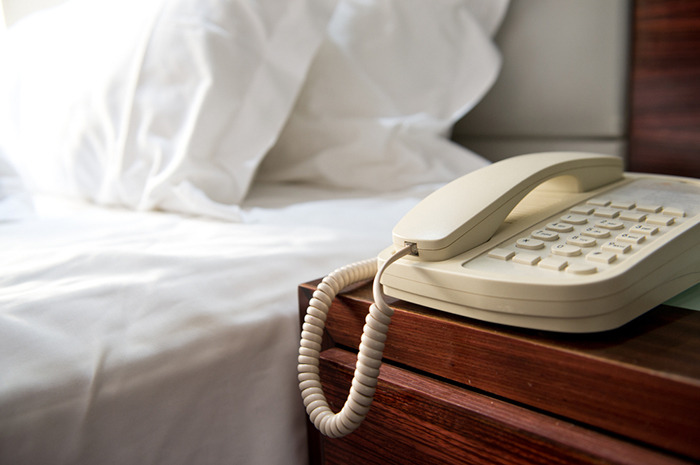How To Spot Bedbugs In Your Hotel Room
Bedbugs infestations occur close to where people sleep, and hotels are a common hotspot. Don't think this applies to just fleabag motels. Cleanliness has nothing to do with it. Your first action as soon as you enter a hotel room should be to put your luggage in the bathroom—this is an unlikely place for bedbugs to hide—while you inspect the room.
Check the pillows
The tiny insects, which are just about 4 millimeters in length, can stay almost invisible to the naked eye in a pillowcase. They are an easy infestation hot spot because they can host a lot of eggs undetected. If that's the case, your pillow will probably smell of mold. You want to consider buying a bedbug blocker pillow protector. They are usually zippered and have a bite barrier.
Check the luggage racks
Luggage racks, especially those made of wood, are overlooked but very possible locations where bedbugs can hide. (Bedbugs love wood but hate tiles.)This is one way the bugs can get on a person's luggage. Don't use closet shelves or drawers, until carefully inspected, for the same reason. Look for cracks and crevices.
Check the fold and seams of the mattress
Lift the mattress and check underneath as well. Ask for a flashlight if you don't have one on your phone. Look at the folds and seams in the corner of the mattress. It may be a good idea to use a credit card or something else to get under the folds of the mattress, because this is another spot the annoying bugs love to hide.
Check the curtains
Sometimes bedbugs will lay eggs on the curtains. Bedbugs can travel from clothes to clothes even while you're washing them. Only extreme heat will kill them. So if the curtains or drapes were mixed with bed sheets or clothes that were infested with bedbugs and washed with warm or cold water, the bedbugs or their eggs have likely survived.
Inspect the bed
The Cimex lectularius, a parasitic insect that feeds on blood, is commonly called the "bedbug" for a reason. Bedbugs like to be very close to where people sleep so they can have their "food" undisturbed. Don't put any luggage on the bed until you have checked every inch of it for blood stains or small black dots. At first they will look like ground black pepper. Check for the critters, too.
Check the wallpaper
Bedbugs can't fly, but they can crawl long distances, and they can do so under the cover of wallpaper undetected. Watch out for any loose wallpaper. Pay attention to spaces behind electrical switchplates because this is a favorite sneaking spot as well.
Check the couch and other furniture
Bedbugs can hide practically unnoticed in narrow cracks and seams which you may find in different kinds of furniture. If you feel this is the case, wrap the furniture with possible bedbug entrances in plastic. The nasty insects tuck into the corners and undersides. A good tip to remember: If a credit card can fit into a crack in your furniture, a bedbug likely can as well. They can also live in leather, suede, and vinyl.
Check the box spring
Check the box spring seams for bugs — especially at the head of the bed. Adults, nymphs, and eggs are all visible to the naked eye, according to Consumer Reports. Also keep your eyes peeled for exoskeletons (casings that the bugs leave behind when they molt) and dark, rust-colored spots.
Check blankets and linens
Pull the blanket and linens off the bed. Make sure you inspect the corners in detail. This is a very likely place for bedbugs to hide. Even if you don't see the insects, you may see dark brown blood spots they left. Check in the cushions and seams of any couches or soft chairs as well.
Check the surface of the sheets
Dark corners and folds are not the only places bedbugs reside. They can be on the surface of sheets and you may not even notice if you're not specifically looking. After all, they are just about 4 millimeters long. If you see small brown spots and dried blood, ask for a different room.
Check the nightstand
Make sure you closely examine, possibly with a flashlight, all the cracks and splits of the nightstand, including screw holes and joints. Do the same with all drawers.
Check the headboard
In most hotels the headboard is attached to the wall, which is one route bedbugs like to use to travel. Check the headboard for cracks but also look behind it. It is dark there so use the flashlight to look for fleeing bugs.
Check behind picture frames
Broaden your search to areas to where you normally wouldn't think to see bedbugs. They can travel underneath walls, so picture frames are a likely spot for the insects to hide. Also, such frames are likely above the bed, which is where the bugs will eventually go.
Check behind phones and clocks
Bedbugs can be found in electronic devices. Anything with small nooks and crannies can harbor a bedbug, including phones, keyboards, clocks, computers, and CD cases. These are not likely places for the insects to infest but you don't want to take any chances.
Use and app
Use technology to your advantage. Yes, there is an app for bedbugs as well. The description of Bed Bug Proof claims to make it simple to inspect a room in 30 seconds. It comes with a visual guide which shows you where to look and it uses your phone's built-in flashlight, camera and zoom lens to help you inspect the areas where bedbugs can hide.
